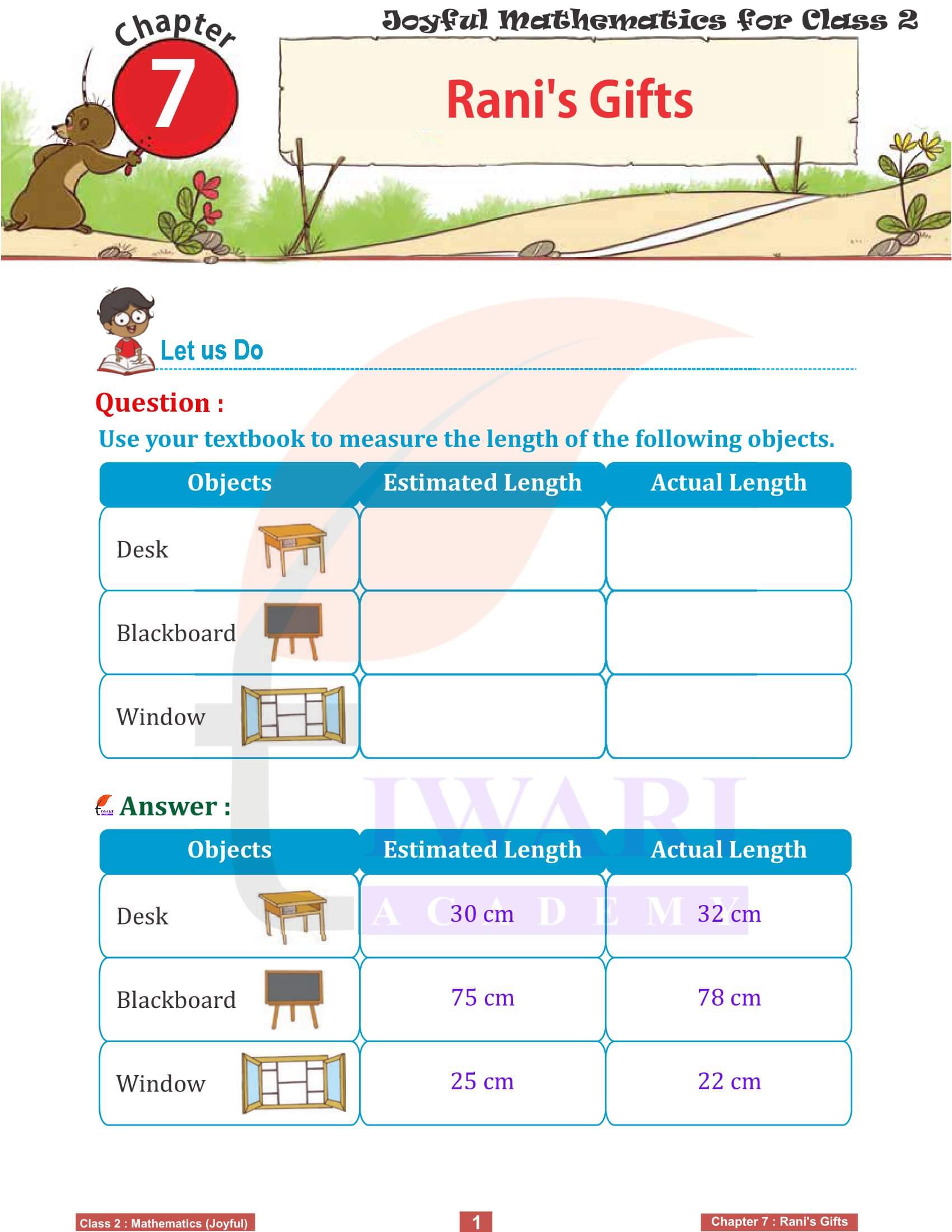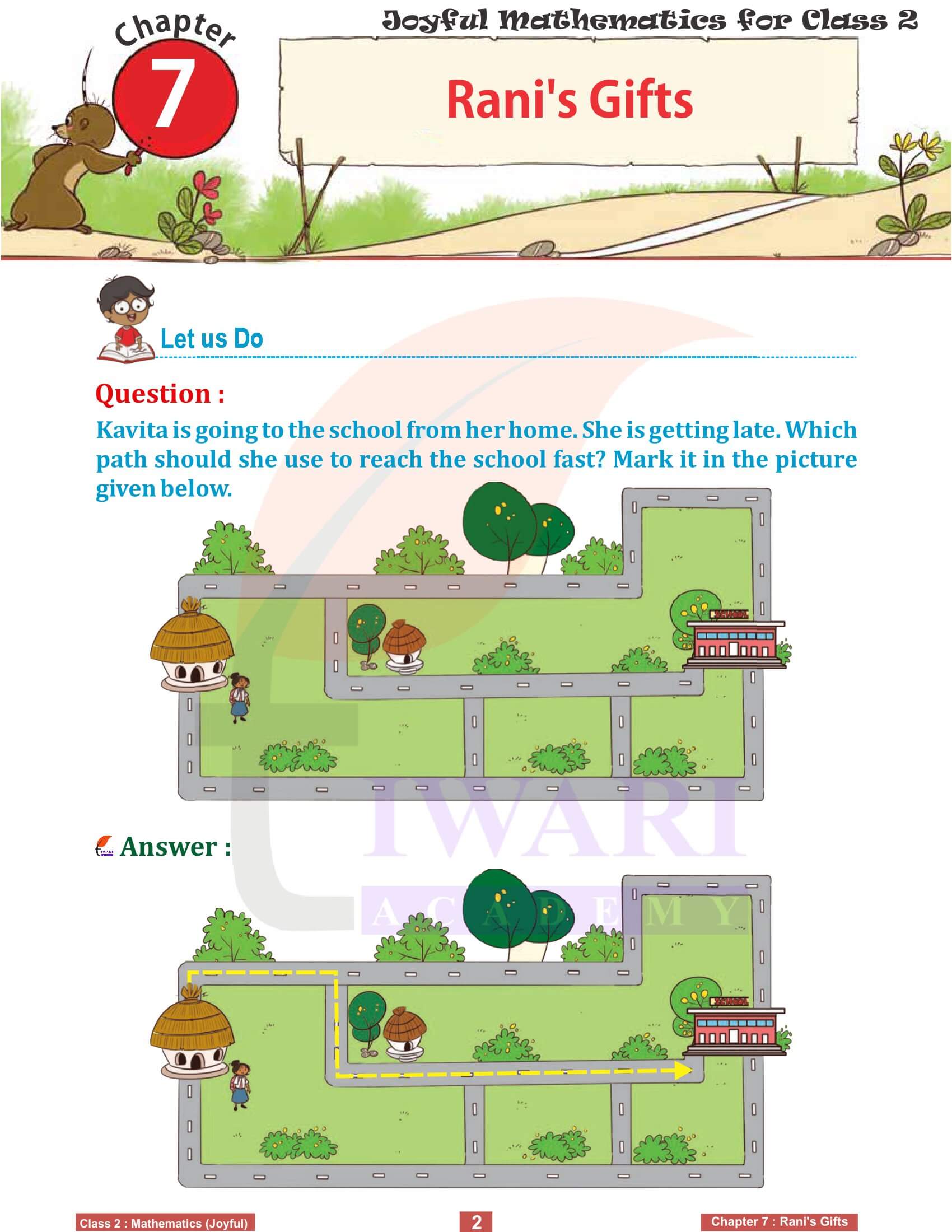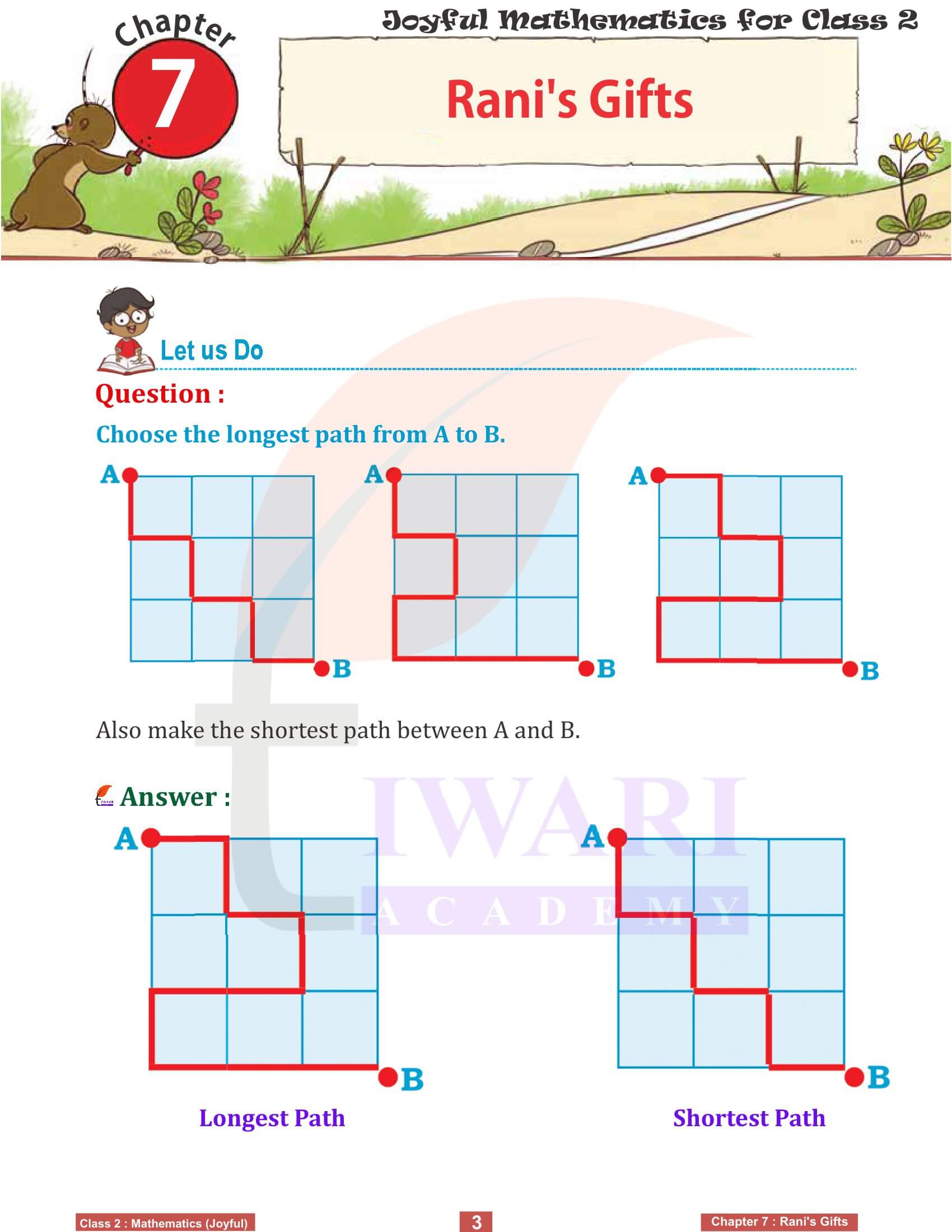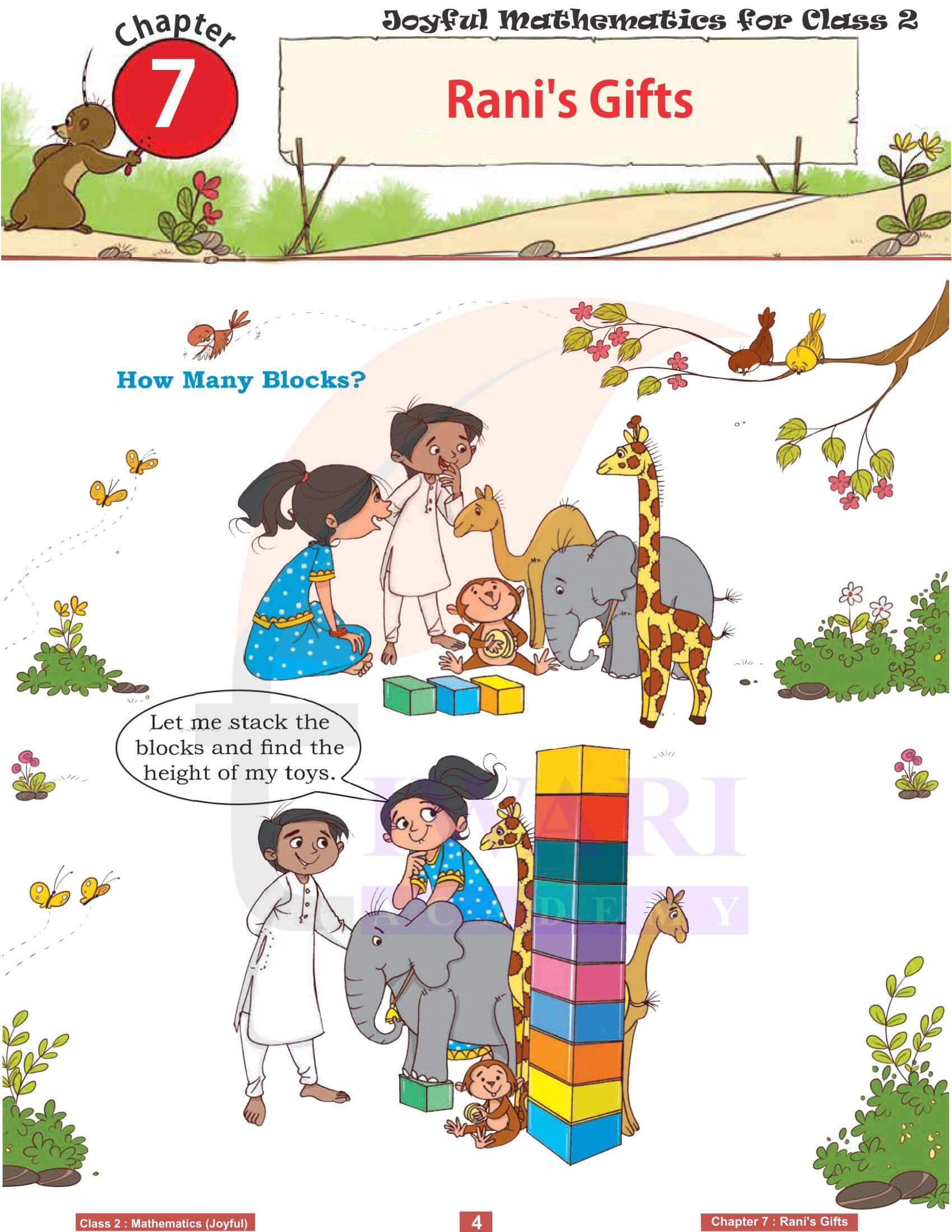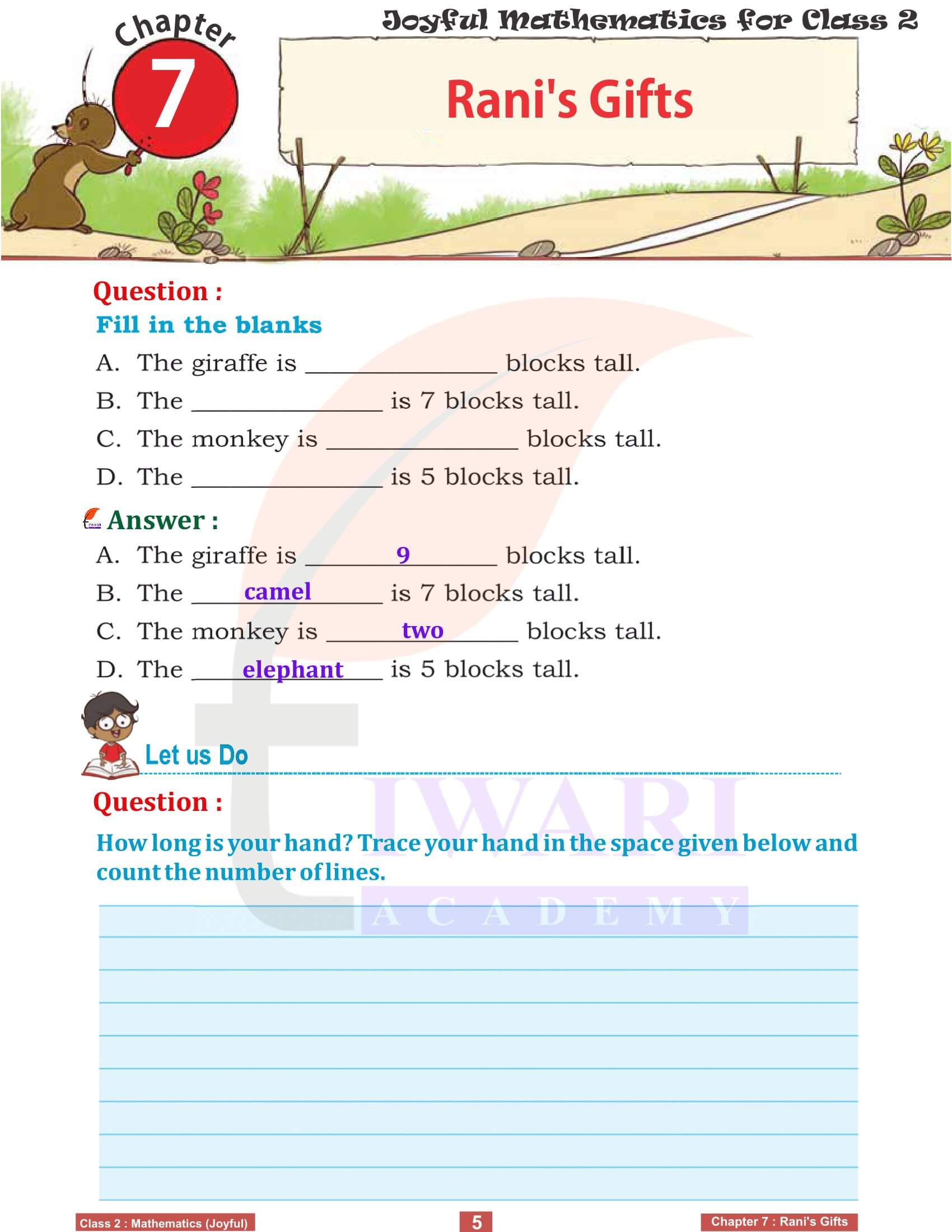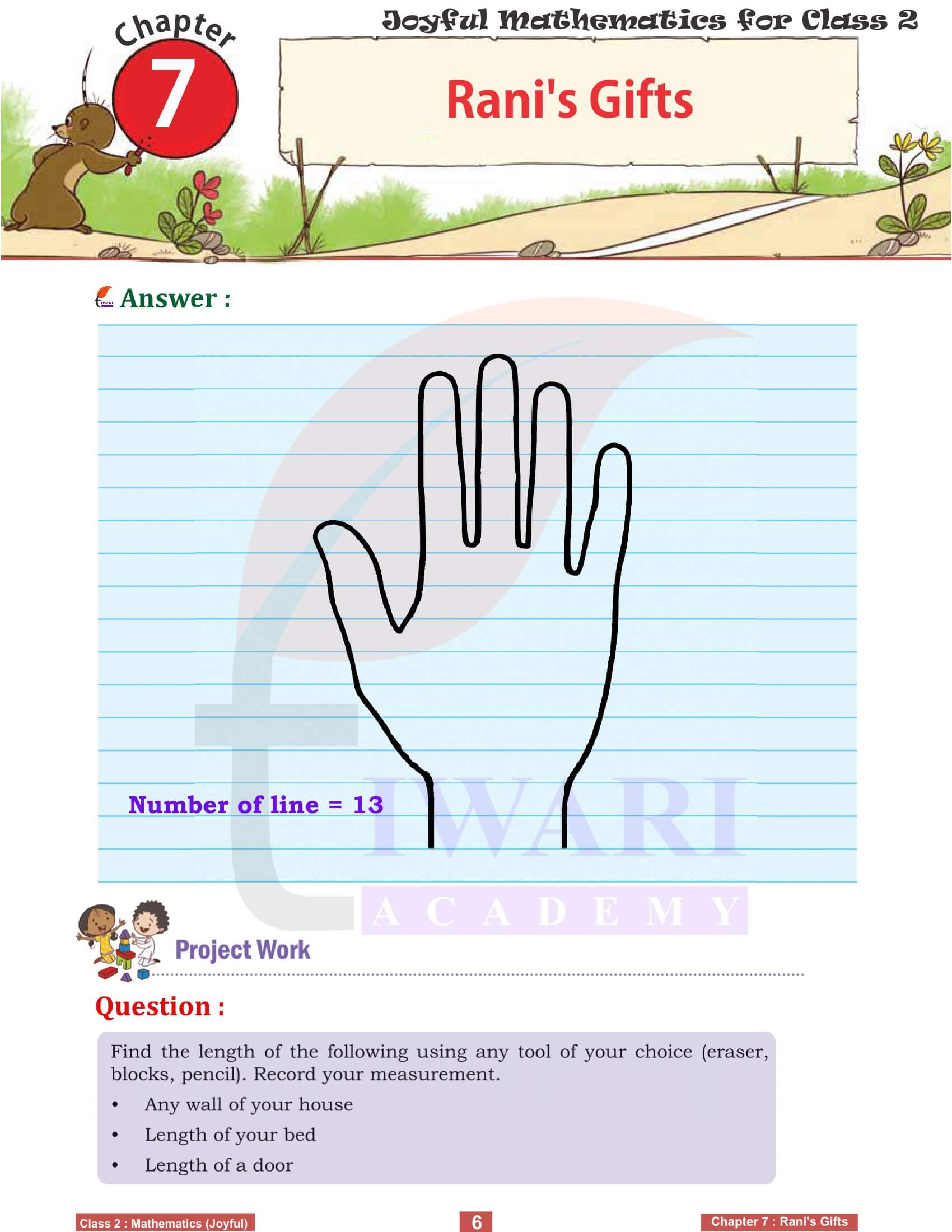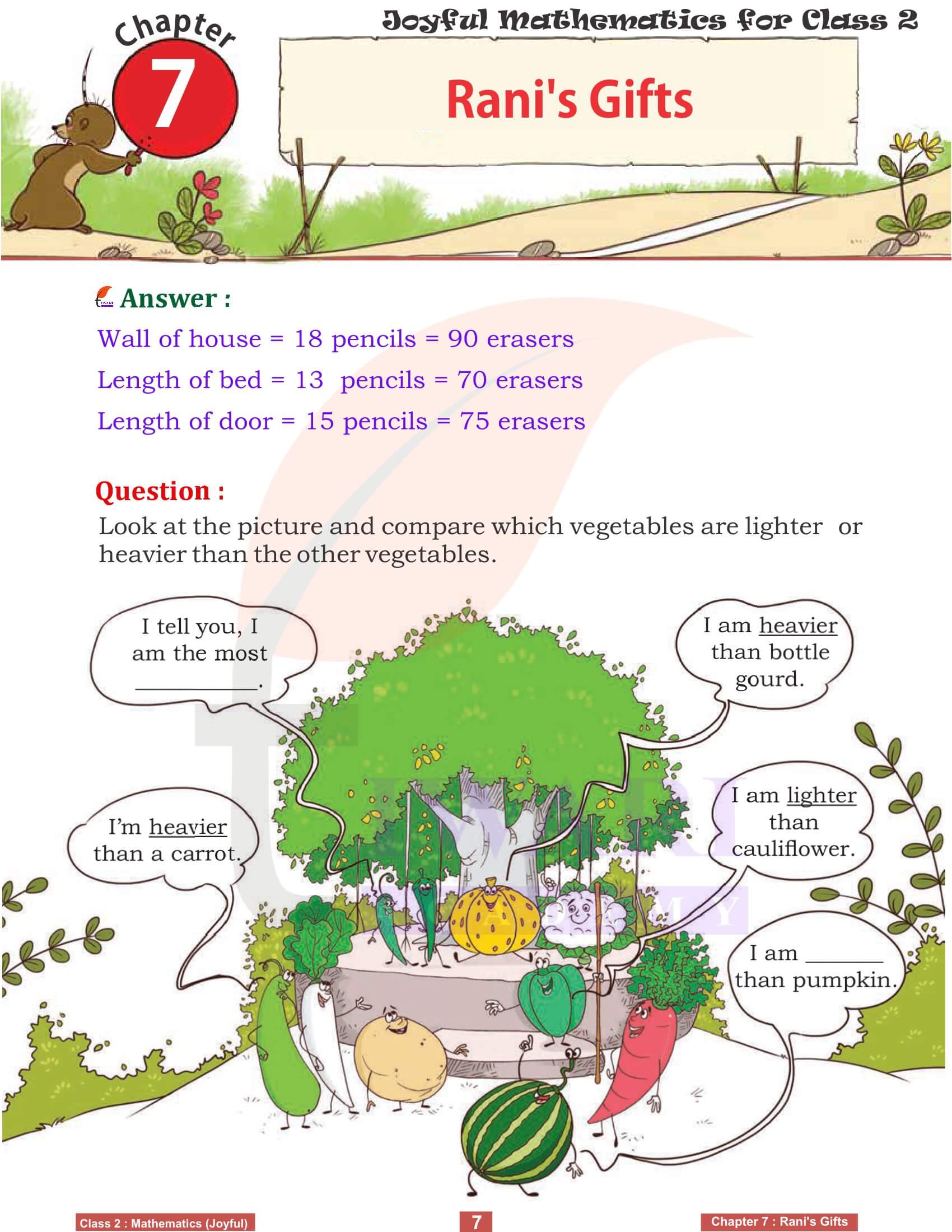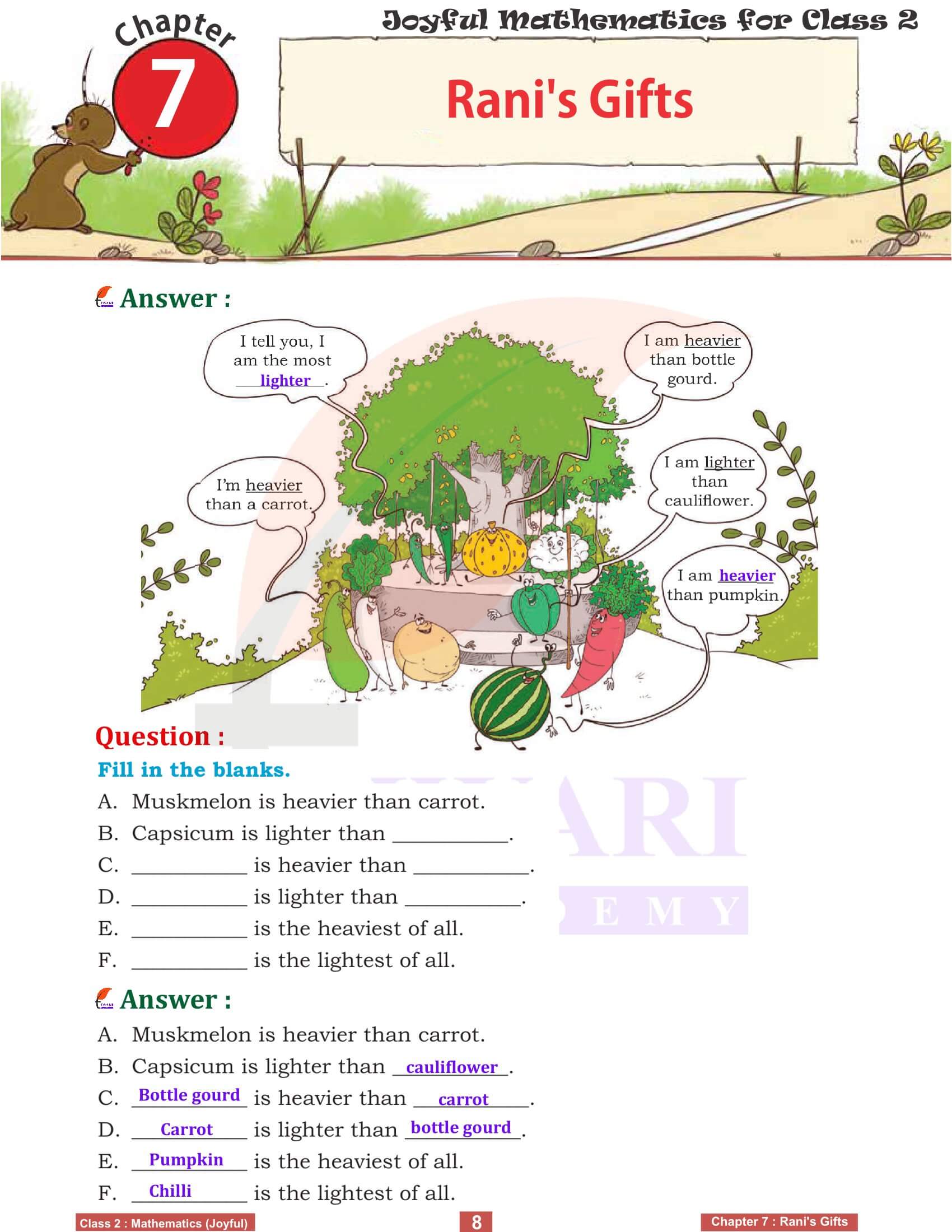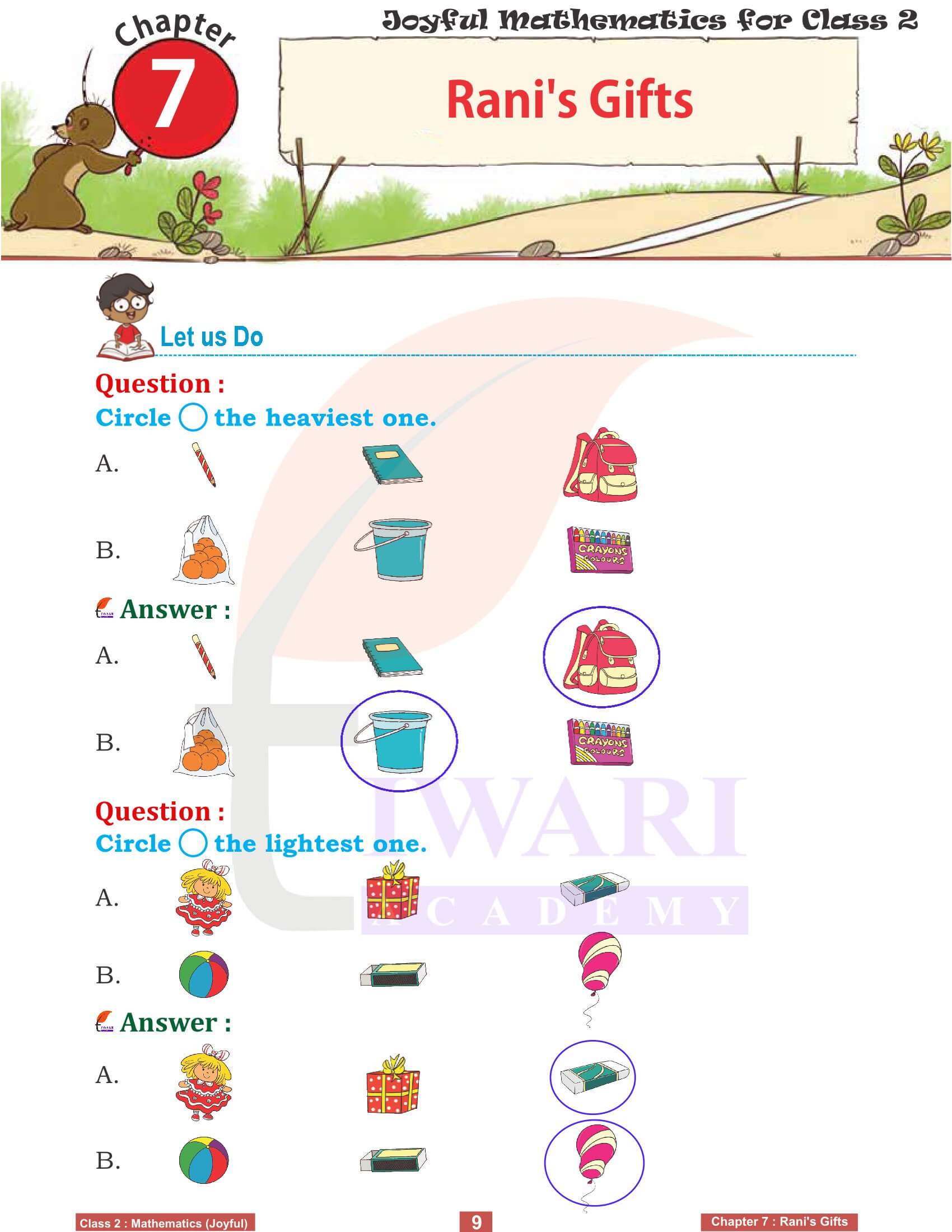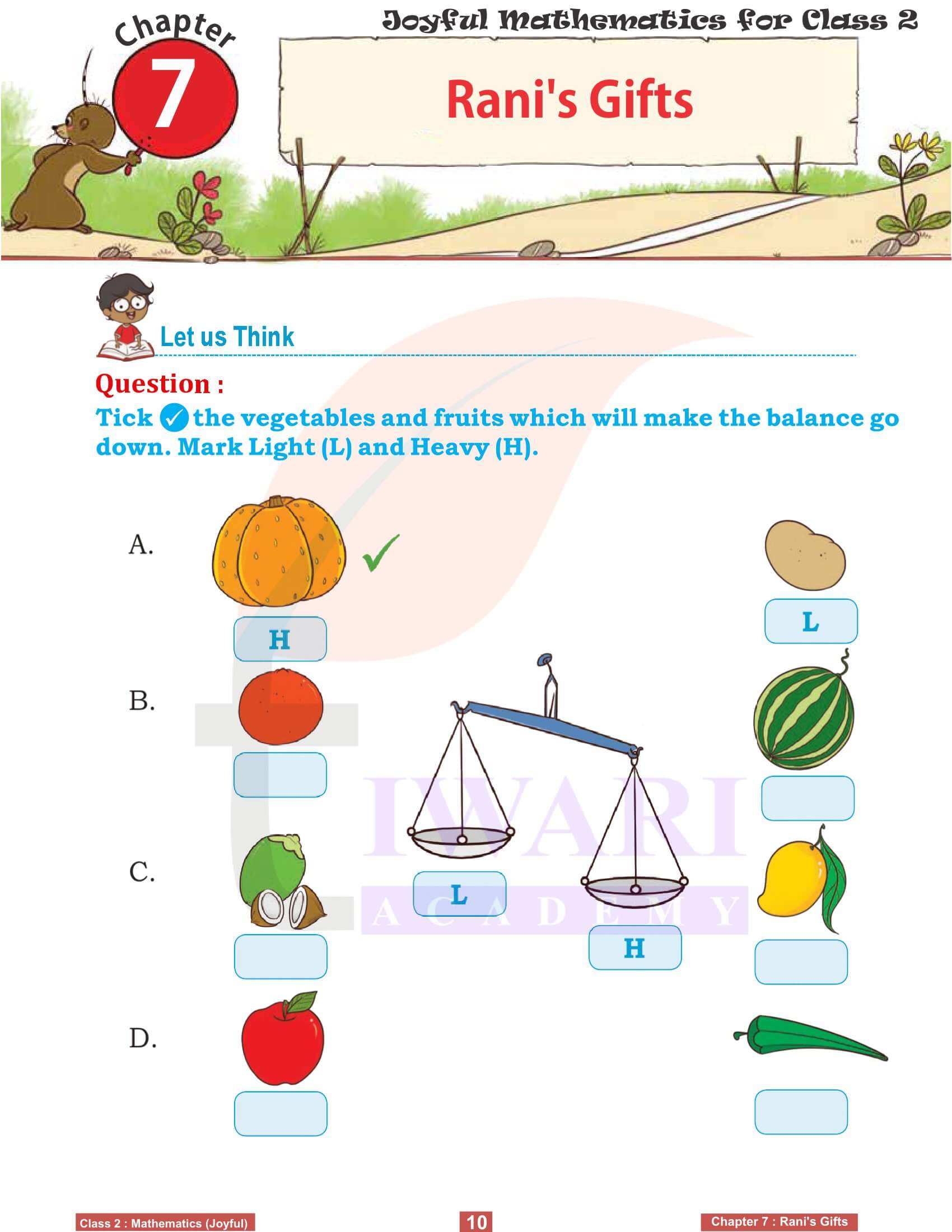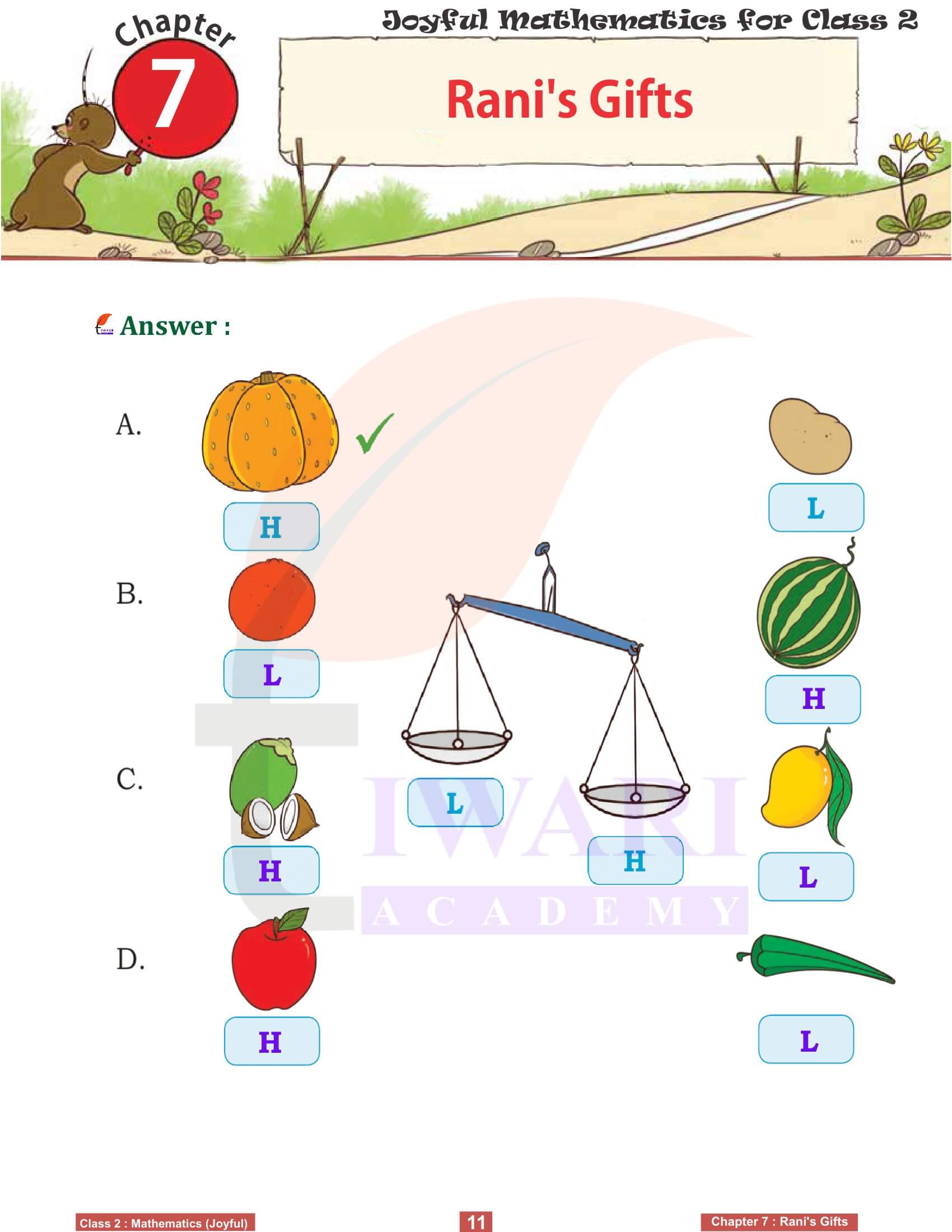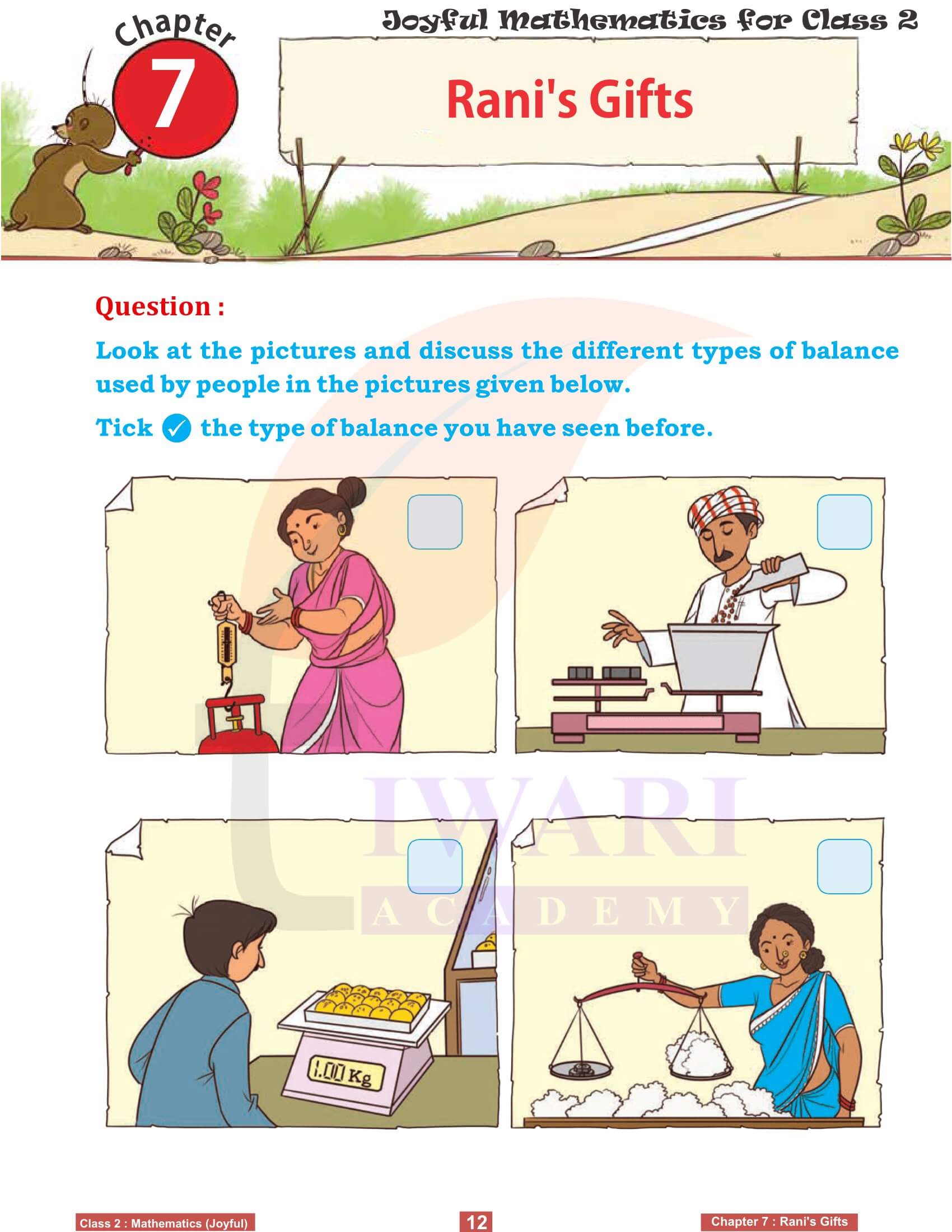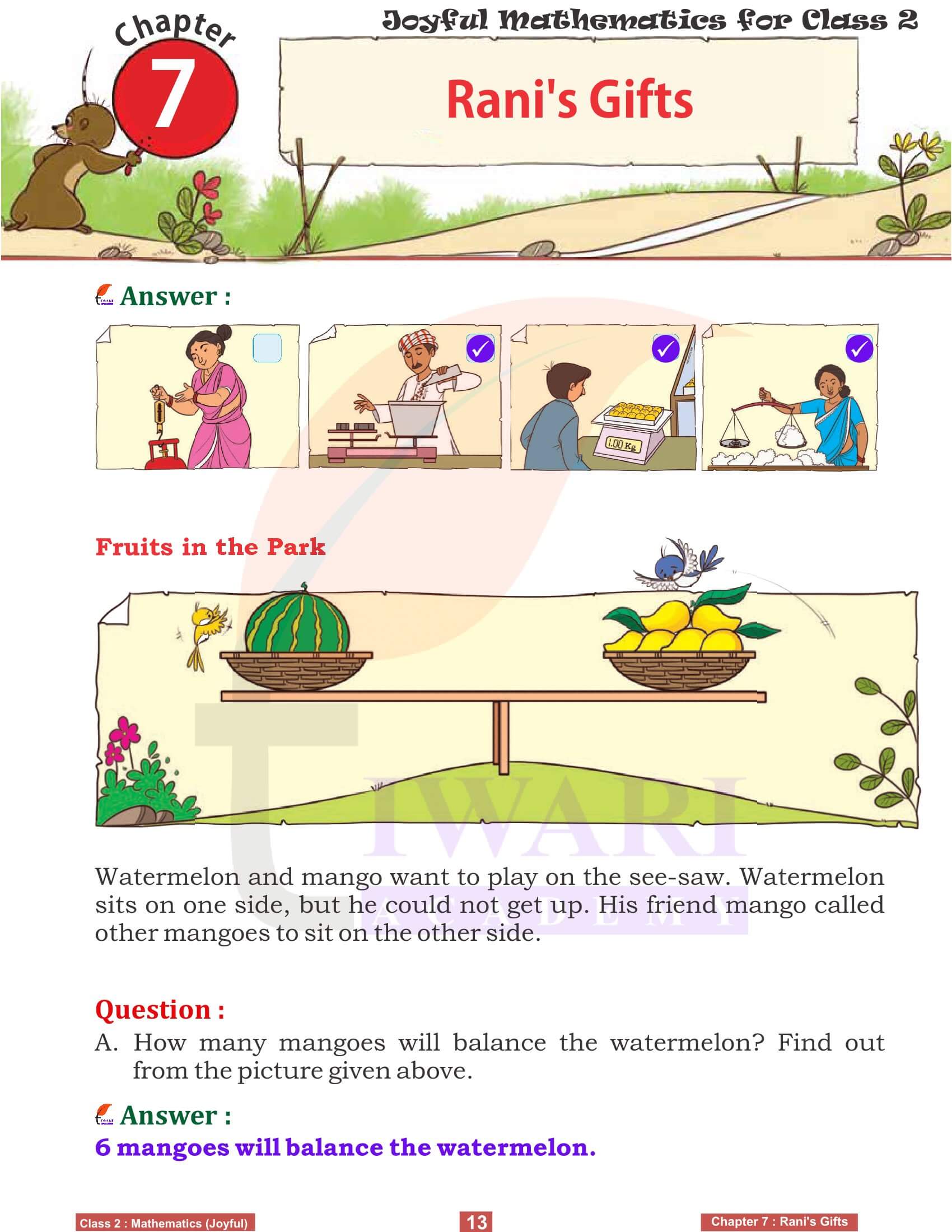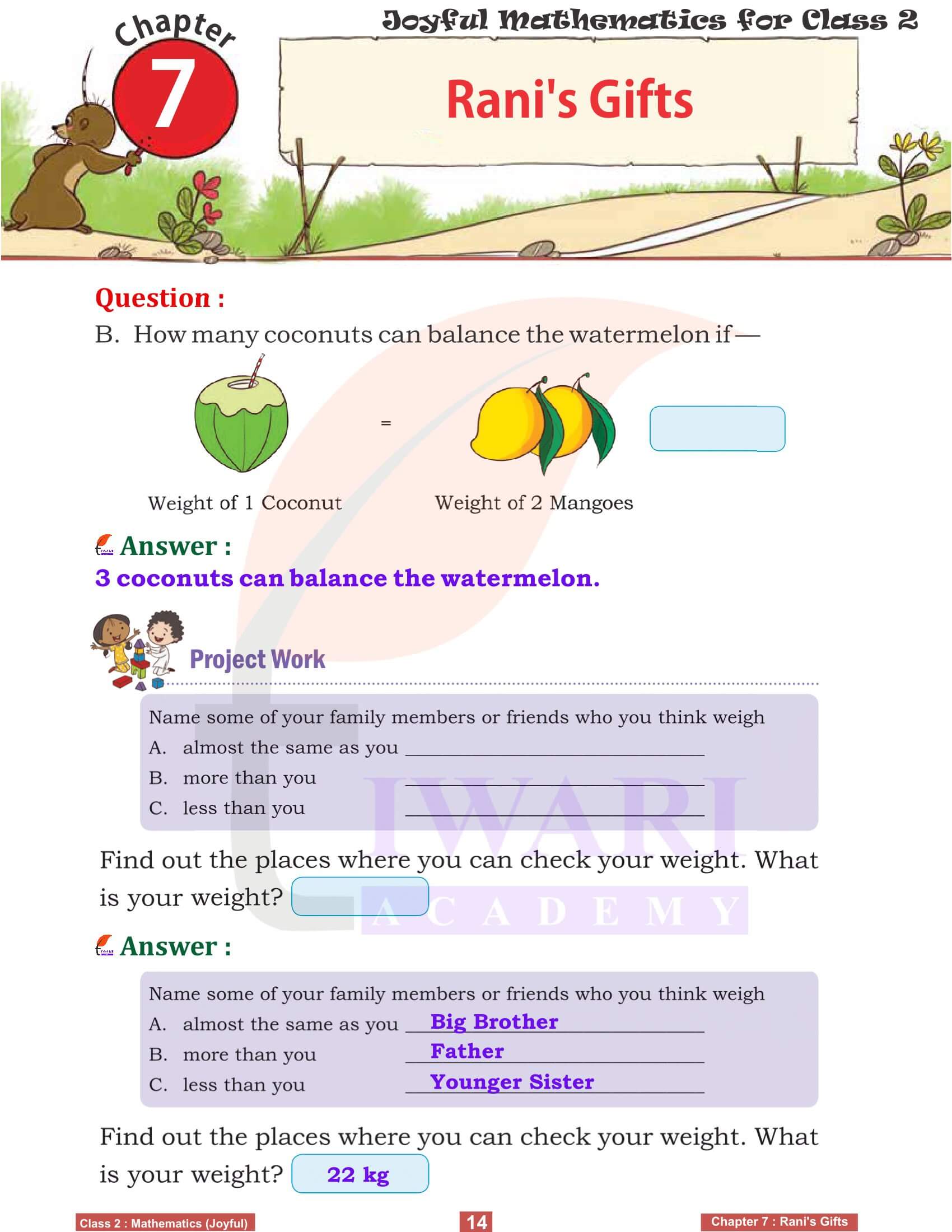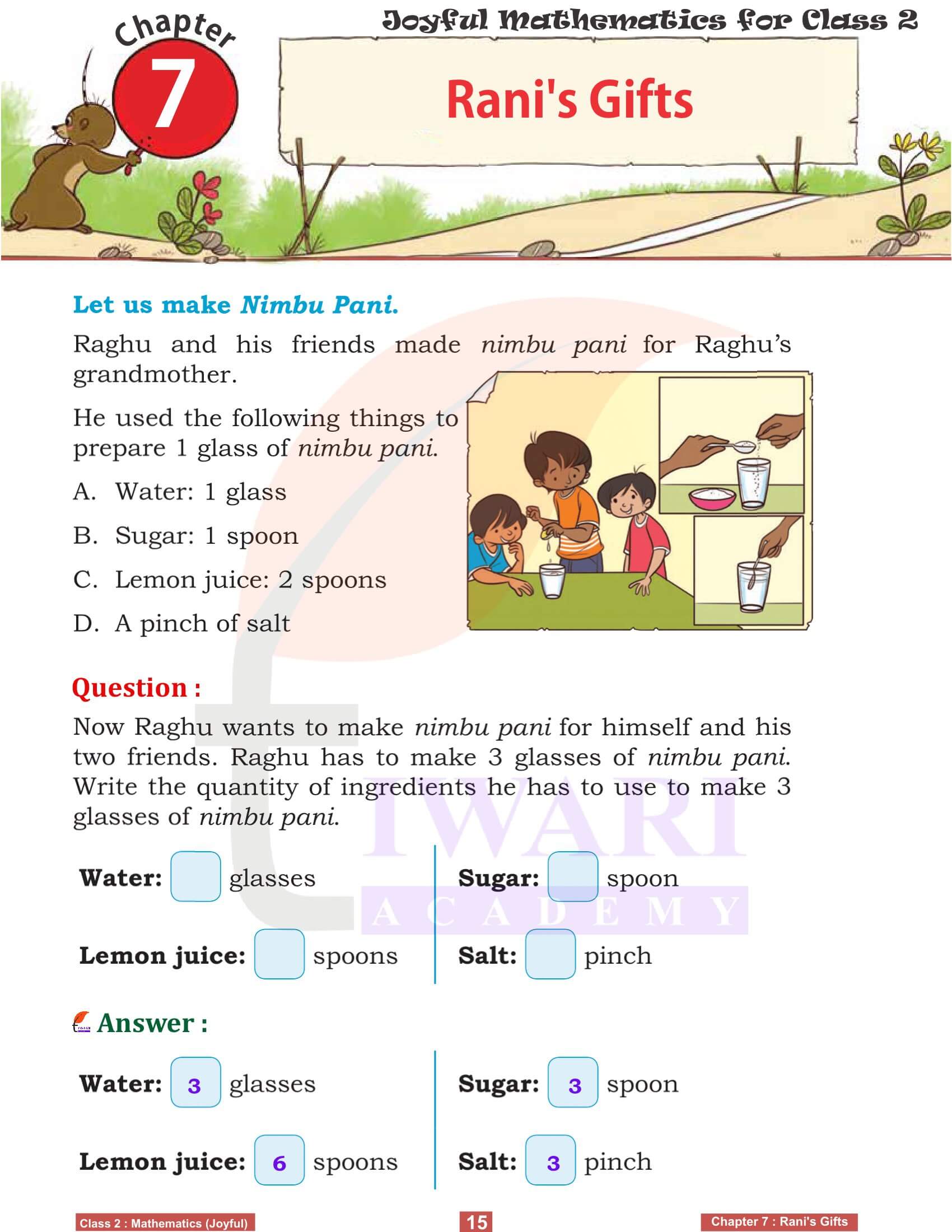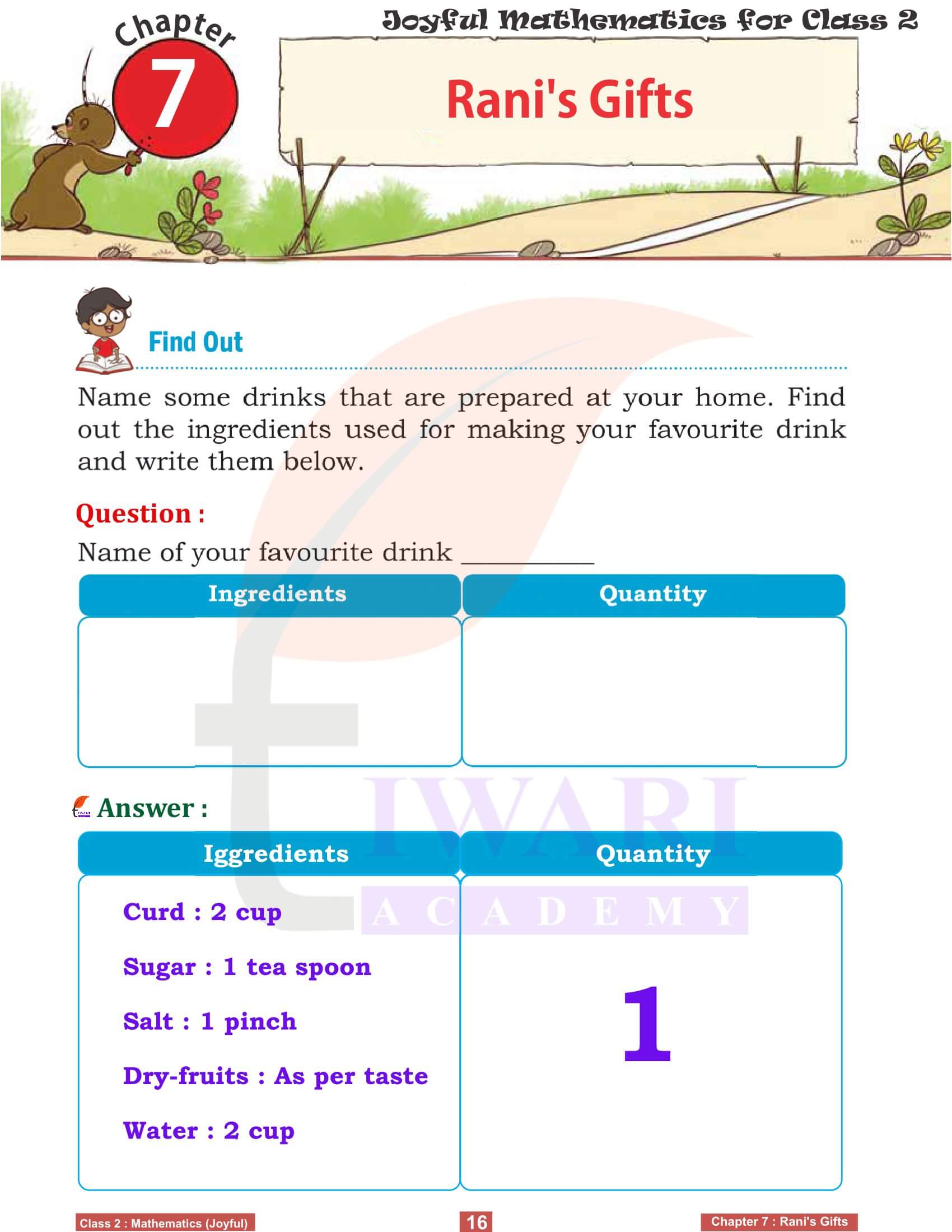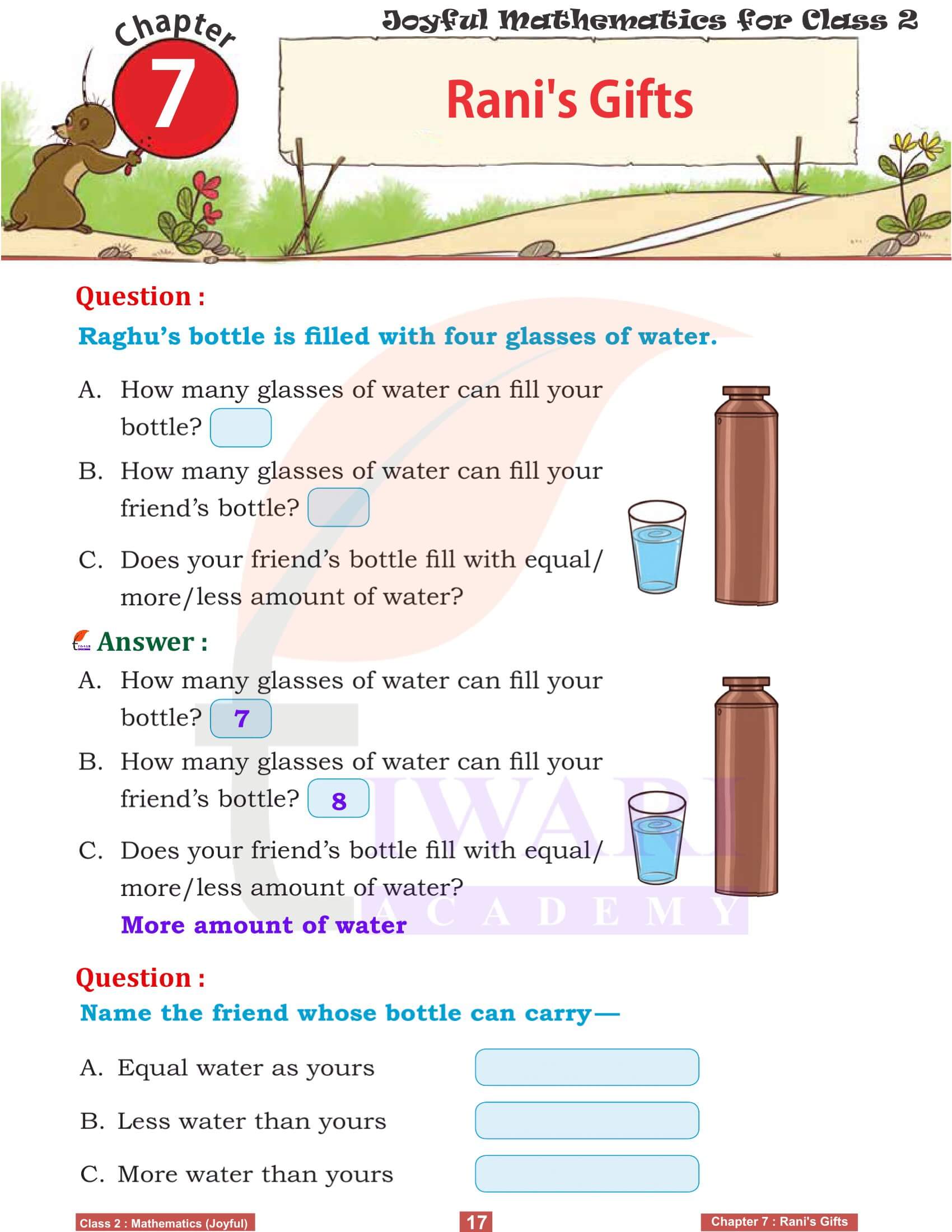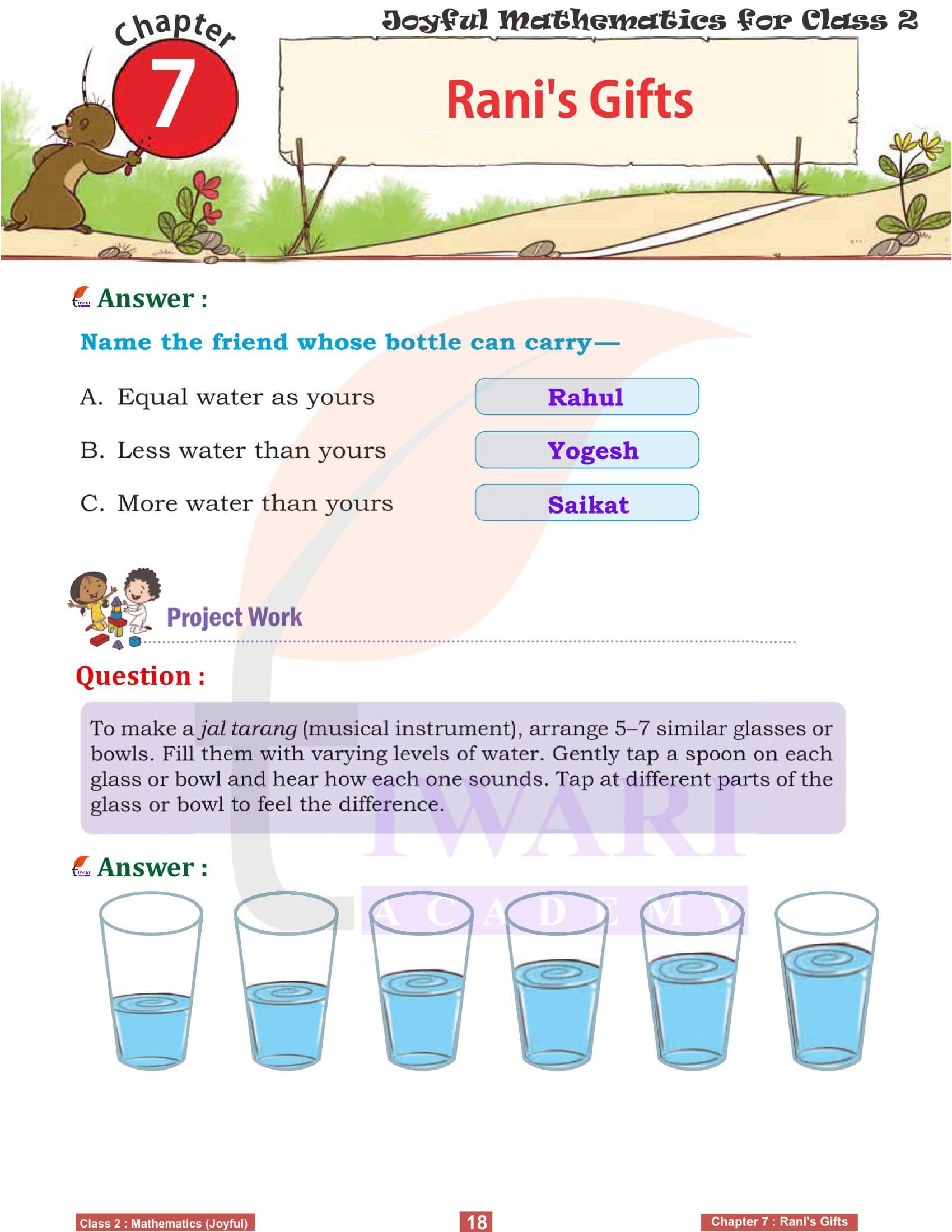NCERT Solutions for Class 2 Joyful Maths Chapter 7 Rani’s Gift (Measurement) in Hindi and English Medium updated for CBSE board 2025-26. Class 2 Maths Chapter 7 solutions are useful for CBSE as well as State board students. The chapter “Rani’s Gift” in Class 2 Maths introduces young learners to the concept of measurement through an engaging story. This NCERT Textbook Class 2 Math Chapter 7 helps children understand how to compare and measure objects using relatable examples. Teachers can create interactive lessons by using Rani’s Gift worksheet for Class 2 to explain these concepts in an enjoyable way.
Class 2 Joyful Maths Chapter 7 Rani’s Gift Solutions
Activities such as measurement worksheets for Class 2 or group tasks around measuring classroom objects bring the story to life and enhance understanding. Parents and educators can also use Rani’s Gift Class 2 video resources and interactive activities to make the chapter engaging.
Study Plan for Class 2 Maths
Study Plan for Class 2 all Subjects
“Rani’s Gift” offers an exciting way to learn practical measurement concepts in Class 2 by presenting relatable scenarios. With Class 2 Maths Chapter 7 solutions and exercise solutions, children can practice comparing lengths and sizes while solving problems. Teachers can refer to the lesson plan and NCERT solution to prepare engaging sessions. For additional support, parents can download the Class 2 Maths Chapter 7 PDF to guide their children through the chapter at home. Through such hands-on learning and interactive activities, “Rani’s Gift” equips students with a foundational understanding of measurement, paving the way for future mathematical learning.
Class 2 Maths Chapter 7 Rani’s Gift (Measurement)
The chapter “Rani’s Gift” in Class 2 Maths is designed to introduce young learners to the basic concepts of measurement. Through the engaging story of Rani and her experiences, children are drawn into the world of measuring objects using non-standard units. The narrative approach helps to contextualize measurement in a way that is relatable and fun for students. They learn that measurement is not just about numbers and units but also about understanding the size, length, and weight of different objects around them. This chapter lays the foundational knowledge that will be crucial for their future mathematical learning, emphasizing the importance of observation and comparison in understanding measurement.
Understanding Length through Rani’s Story
In class 2 mathematics chapter 7, children explore the concept of length through Rani’s activities. They learn to measure length using non-standard units like paper clips, pencils, or their own feet. By following Rani’s journey, students are encouraged to measure objects around them, fostering a practical understanding of length. This hands-on approach helps demystify abstract concepts, making them more concrete for young minds. The story format keeps students engaged and motivates them to participate actively in learning tasks, enhancing their comprehension and retention of the concept of length.
Learning about Weight with Rani
Rani’s adventures continue as she delves into the concept of weight. The chapter 7 introduces young learners to the idea of heavy and light objects, using everyday examples that are relevant to their experiences. Children are encouraged to pick up different items, compare their weights, and categorize them as heavy or light. This chapter not only teaches them about weight but also sharpens their observational and reasoning skills. By relating these concepts to the familiar context of Rani’s story, students can better grasp the idea of weight, making it more accessible and enjoyable to learn.
Exploring Capacity with Rani
The chapter 7 also covers the concept of capacity, where students learn to understand and compare the amounts that containers can hold. Through Rani’s experiences, they are introduced to the terms “full,” “empty,” “more,” and “less,” which help them in comparing and contrasting the capacity of different containers. This practical approach, using relatable scenarios from Rani’s life, makes the concept of capacity tangible for students. They are encouraged to experiment with various containers, enhancing their learning through direct experience and interaction, which promotes a deeper understanding of the concept of capacity.
Integrating Measurement in Daily Life
Class 2 NCERT Math Chapter 7 “Rani’s Gift” goes beyond the classroom, showing students how measurement is integral to daily life. Through the narrative, children see Rani using measurement in cooking, crafting, and playing, illustrating how these skills apply in real-world contexts. This relevance helps students appreciate the practical value of what they are learning and encourages them to observe and measure objects in their environment. The chapter emphasizes that measurement is not just an academic skill but a necessary tool for navigating various tasks and challenges in everyday life.
Reinforcing Measurement Concepts
The chapter 7 of class 2 mathematics, consolidates the measurement concepts introduced through Rani’s story. It reinforces the ideas of length, weight, and capacity through additional exercises and activities that allow students to apply what they have learned. This reinforcement ensures that the concepts are well ingrained and that students can confidently use their measurement skills.
The chapter concludes by summarizing the key takeaways, encouraging students to continue exploring and applying measurement in new and varied contexts, thereby fostering a lasting understanding and curiosity for mathematics.
Is Class 2 Joyful Maths Chapter 7 easy?
Yes, Class 2 Joyful Maths Chapter 7: Rani’s Gift is designed to be easy and engaging for students. The chapter introduces basic measurement concepts, such as comparing lengths and sizes, through a relatable story. Activities are crafted in a playful and interactive manner, making it enjoyable for young learners to grasp the concepts without feeling overwhelmed. With plenty of examples, visuals and hands-on exercises, children can easily understand the lessons.
The chapter also offers simple NCERT solutions and practice questions to reinforce learning. Teachers and parents can support students using worksheets, lesson plans and videos, ensuring that the concepts remain clear and fun. Overall, the chapter balances learning with enjoyment, making it manageable for Class 2 students.
Can I complete Class 2 Joyful Maths Chapter 7 in 2 days?
Yes, you can easily complete Class 2 Joyful Maths Chapter 7: Rani’s Gift in 2 days with proper planning. The chapter is straightforward, focusing on basic measurement concepts like comparing lengths and sizes, which can be learned quickly. Here’s how you can divide your time:
Day 1:
Read the story of Rani’s Gift and understand the key concepts.
Complete the initial exercises and activities that focus on comparing lengths.
Watch a Class 2 Maths Chapter 7 video or use visual aids to make the concepts more engaging.
Day 2:
Solve the remaining exercises from the textbook or NCERT solutions.
Use measurement worksheets for Class 2 to practice more examples.
Review key concepts and clarify any doubts with help from a teacher or parent.
By following this plan, you can complete the chapter efficiently while enjoying the learning process.
What is the core concept of Class 2 Maths Chapter 7?
The core concept of Class 2 Joyful Mathematics Chapter 7: Rani’s Gift is measurement, specifically introducing young learners to comparing lengths and sizes. Through the story of Rani, the chapter uses relatable examples to help students understand how to measure objects by comparing their heights, lengths or sizes without using standard tools like rulers. It emphasizes concepts such as “longer,” “shorter,” “taller” and “smaller,” encouraging children to use everyday items for comparison.
This foundation in measurement is taught in an engaging way through activities, questions, and exercises. It builds observation and reasoning skills, enabling students to apply the concepts practically in their daily lives, like measuring objects at home or school.
Why do student like Class 2 Maths Chapter 7 most?
Students enjoy Class 2 Maths Chapter 7: Rani’s Gift because it presents mathematical concepts through a fun and relatable story. The chapter introduces measurement in a playful and interactive way, encouraging children to compare objects in their surroundings. Activities like guessing which object is longer or shorter and measuring with non-standard tools (like pencils or sticks) make the learning process exciting and hands-on.
Additionally, the story format keeps students engaged and curious about what happens next, making it feel less like a lesson and more like an adventure. The colorful visuals and simple language make it easy to follow, while activities allow them to actively participate. This combination of storytelling, interactive exercises, and practical applications makes it a favorite among Class 2 students.
